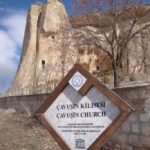During the Iron Age most of Western Anatolia was ruled by a people called the Lydians. Although their precise origins are unclear, they seem to be descendants of people who set up a neo-Hittite state, called Arzawa, in the same area in the 12th century B.C. At the height of their power, they ruled over an area that encompassed most of what is now western Turkey, with their capital at Sardis, near Manisa.
It was here in the fifth century that the historian Herodotus described the first coins being minted, probably during the reign of King Alyattes (610-550 B.C.). In a possibly linked development, Herodotus also credits the Lydians with having built the first permanent shops.
A Lydian language is known to have existed right up until the first century B.C., but little is known about it. Ditto the situation with the Lydian pantheon of gods, which included a Cybele-like mother goddess and a Teshub-like thunder god.
Herodotus tells an astonishing story about a king named Gyges who first established the capital at Sardis in the seventh or eighth century B.C. A government minister, he was apparently persuaded by King Candaules to hide and observe Candaules’ wife’s naked beauty. Unfortunately for Candaules, his wife spotted Gyges and demanded that he kill her husband and marry her in his stead.
Otherwise, the only Lydian monarch to have stirred history’s imagination was Croesus (595-c.547 B.C.), a man so wealthy that the expression “as rich as Croesus” is still sometimes used to describe the Elon Musks of this world. By his reign, invading Cimmerians had overwhelmed the Lydians’ neighbours, the Phrygians. They were less successful against the Lydians, who forced them out and occupied the old Phrygia, rebuilding over the ruins at Gordion.
Mythology provides a link between the two peoples in that the wealth of Lydia was built on its access to gold mined using sheepskins from the river Pactolus (Sart Çayı). This gold was said to have been bestowed on the river by King Midas, the Phrygian king who had found to his cost that his wish that everything he touch should turn to gold included his food and his daughter. His desperate prayers to be relieved of the gift were answered with the suggestion that he wash it away in the river, which ever afterwards ran with gold.
Croesus used some of his wealth to make donations to the oracle in faraway Delphi, Greece. Closer to home, he also contributed towards the cost of rebuilding the great Temple of Artemis at Ephesus, which was at that time subordinate to Lydia.
Conceivably, he was thought to be so unusually rich because he was one of the first rulers to be able to carry his wealth around with him in gold form rather than having it all tied up in land and property.
Croesus may or may not have died on a funeral pyre observed by the Persian king (in some accounts he lived on as an advisor to him), but that was the effective end of Lydia as an independent power. First it became a satrapy of Persia with the Royal Road built to link it to Cyrus’ capital at Susa (now in Iran). Finally, of course, it became just another component of the Roman Empire.
Despite their once great power, the Lydians have left few traces in Anatolia. The main site of interest for visitors is Sardis, although most of what can be seen there long postdates the Lydians. It’s the same in places such as Thyateira (Akhisar), near Manisa, which was once a Lydian settlement; today, visitors see only the remains of what was built in Roman times. The second most important site for fans of Lydia turns out to be Uşak, where a museum is home to the splendid Karun Treasure. Most of the finds from Sardis are housed in the Manisa Archaeological Museum (despite the building of a new museum to house them it was yet to open in 2024).

